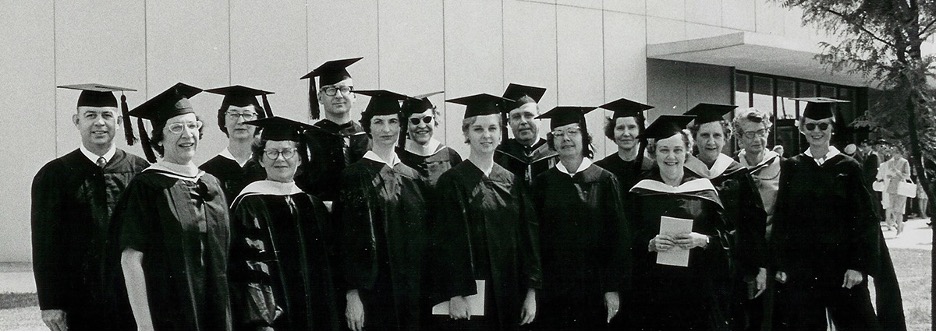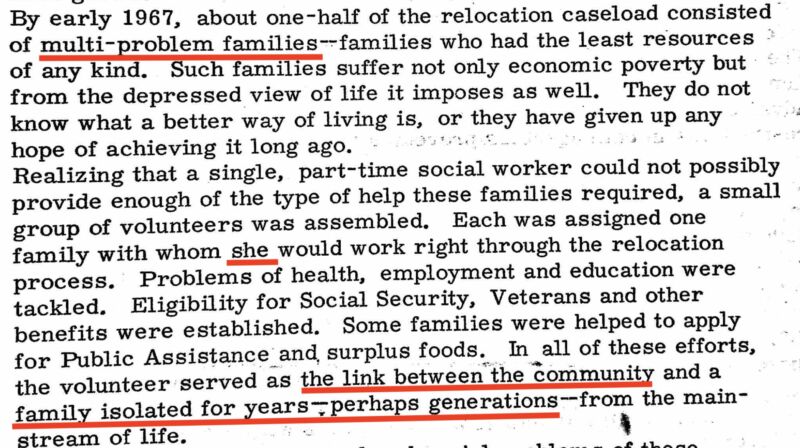Social Work participated in the destruction of Linnentown

One of Linnentown’s last standing houses, the home of the Crook family, is pictured in front of the new UGA dormitories.
Hargrett Library, UGA
As early as 1900, Black families began to settle on Peabody Street and Lyndon Row in a 20-acre area bordered by Baxter, South Finley, and Church Streets. By 1960, the Linnentown community had grown to about 50 families, and by 1970, it had been erased by a federally-supported program of “urban renewal” and replaced by UGA’s Brumby, Russell, and Creswell Halls. The City of Athens labeled Linnentown “a slum” and paid its homeowners as little as $1,450 before displacing and dispersing them. The losses to Linnentown homeowners have been recently assessed at over $5 million dollars.
Maude Keeling, a graduate of UGA Social Work’s first MSW class in 1966, worked with Athens’ Urban Renewal Department to assess and relocate Linnentown’s families.

Maude Keeling was a member of UGA’s first class of MSW graduates in 1966.
Photograph courtesy of UGA School of Social Work

The “Dwelling Survey” was part of the assessment of Linnentown families and their homes performed by social worker Maude Keeling and others working with Athens Urban Renewal.
Hargrett Library, UGA
Social workers and volunteers under Keeling’s supervision assessed the adequacy of Linnentown’s homes and often judged the dwellings to be “substandard.” Keeling wrote that Linnentown residents “suffered not only economic poverty but from the depressed view of life it imposes.” In Giving Voice to Linnentown, Hattie Thomas Whitehead, whose family was forced out of their Linnentown home, refutes Keeling’s assessment as “deeply offensive.” She writes,
Our families may have been poor by the world’s standards, but…we believed in the American dream [and] we had not given up hope of achieving it until the government took away our homes and our land.
Echoing the social work language of her day, Maude Keeling labeled Linnentown residents as “multi-problem families” and perceived them to have been “isolated for years—perhaps generations.” Maude Keeling was a white, middle-class woman living in Athens’ Five Points neighborhood where she had full access to City services (e.g., sewer, water, electricity, streetlights) that had been denied to Linnentown residents.

It was Maude Keeling’s job to assess families whose social and economic circumstances were very different from her own.
Hargrett Library, UGA

Flyer for a meeting to plan remembrance and repair for social work’s role in the destruction of the Linnentown community.
During spring semester 2023, students and faculty at the School of Social Work began to discuss social work’s role in the destruction of Linnentown and reflect on how our assessment practices have done harm in the past and may continue to do so in the present and future. Plans for “what’s next” continue.

Hattie Whitehead discusses social work’s role in the destruction of Linnentown with UGA Social Work students and faculty in January 2023.
Photograph courtesy of Jane McPherson
Cite this Article
McPherson, J. (2024, January 6). Linnentown. Complex Cloth. https://complexcloth.org/linnentown/
Sources
Whitehead, H.T. (2021). Giving voice to Linnentown. Tiny Tots & Tikes Publishing.
